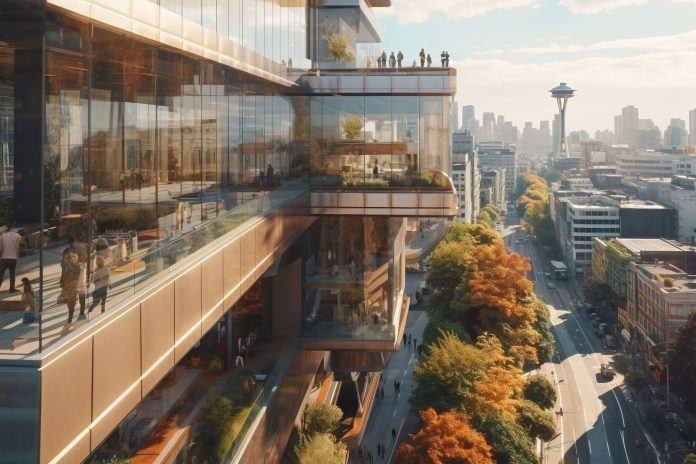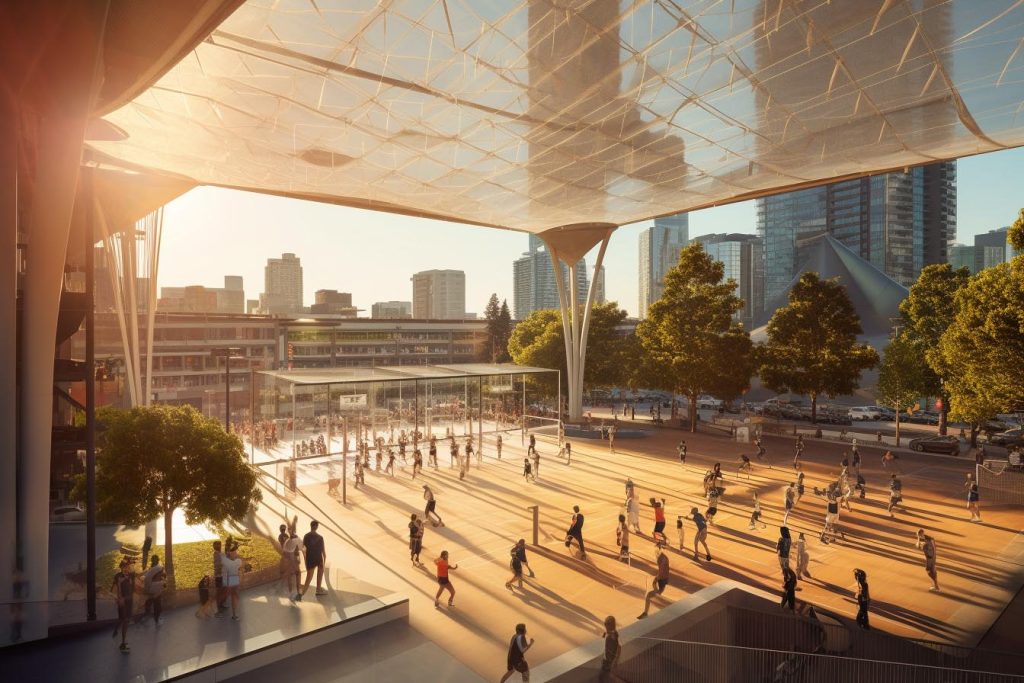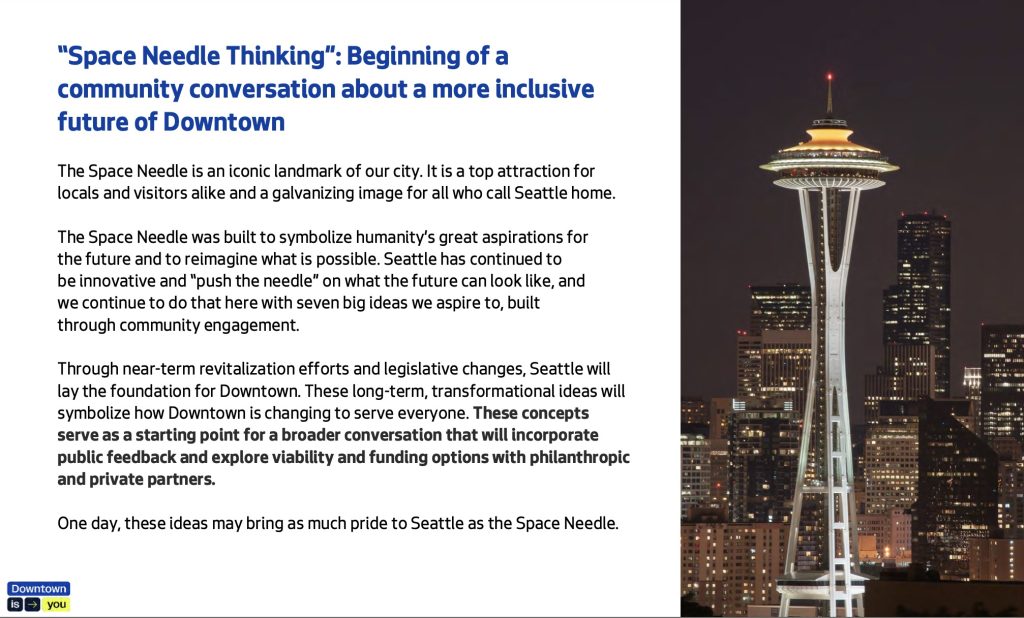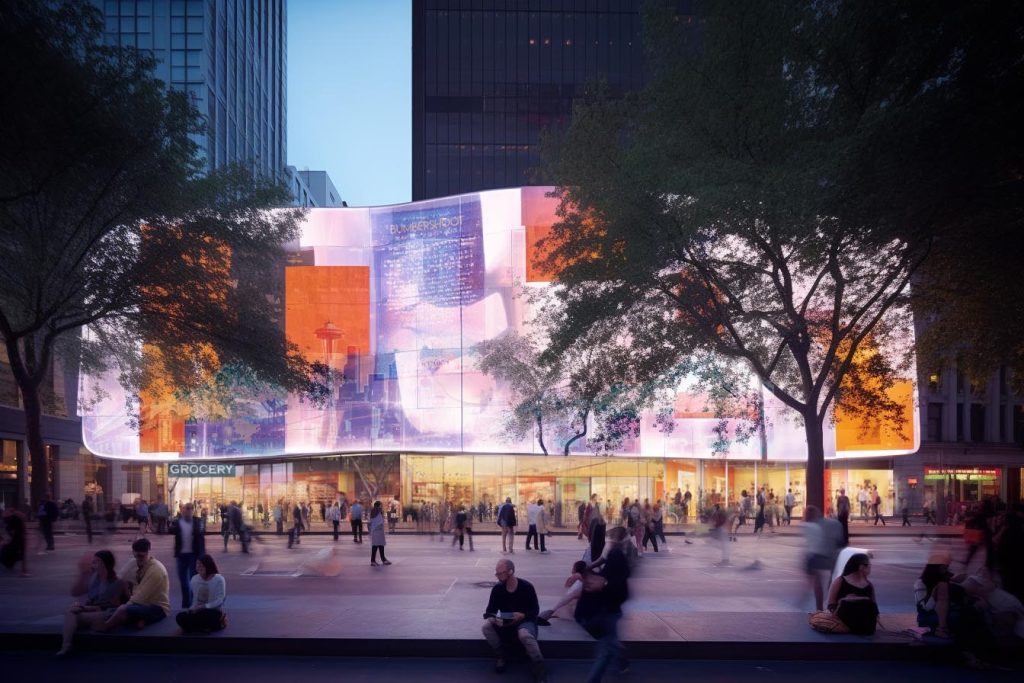
City dirty. Apply antiseptic liberally.
The flexible hybrid schedules and the hit-and-miss Return to Office plans of major employers are hurting most cities’ central business districts. Most downtowns were built of stacked offices over coffee shops to maximize the investment return on having folks spend 71% of their days in a cubicle. Failing to draw office workers back has become a political issue as sleepy, empty streets leave space to get announced as dangerous on the evening news. Cities like Seattle are preparing all of the tools to make Downtown cool again.
Formally presented as the Downtown Activation Plan on Wednesday, Mayor Bruce Harrell announced a series of “seven bold goals” to “help build an equitable and inspiring vision for downtown.” From alleyways closed for stickball to hoppin’ concerts on the waterfront, civic groups and City Hall are pulling out all the stops they can think of to revitalize downtown.
Downtown is going to be just absolutely perfect. Super neat. A gem.

The Downtown Activation Plan’s seven goals are things like “make downtown safe and welcoming,” “make downtown a top destination for Seattleites and visitors year-round” and all the other resilient, experiential, green things a modern city needs. Under each goal are tons of initiatives that are going to be really cool to see happen. Bumbershoot events on the corners and satellite farmers markets among towers will be really neat.
Some action items from the Downtown Activation Plan represent deep structural changes. Expanding child care downtown is great, even if there is not an elementary school to feed into. Lidding I-5 and turning it into a park is just fabulous, even if Lid I-5’s proposal talks about affordable housing and going full park will prevent it from ever being used that way. And rezoning a few blocks of Third Avenue is positively neato, even if it leaves in place the 40 other downtown zoning designations.
Even the idea to convert downtown buildings to housing is downright exciting! Yes, it will have to overcome incredible costs and structural issues with modern office buildings, as seen in the New York Times’ illustration of the subject. But building out a home in what used to be a windowless cubicle farm could one day result in really nice windowless cubicle apartments with a bathroom and hot plate. It’ll be just… great.
And that’s the end of even my tolerance for my own sarcasm. In reality, Harrell’s plan is polishing a bunch of old ideas with nice charts and words from the tech-bro thesaurus. There are a lot of sweeps and “keep drugs illegal” safety things padded with already approved projects like the Crisis Care Centers that passed by referendum in April. Stick in a few tasks about park activation, plans for a couple murals, add pictures, and it’s ready to announce before TV cameras.
The most irritating part of the whole plan is that Harrell is labeling this all as “Space Needle Thinking” without an iota of irony or guile. The Space Needle is the last century’s image of where we are supposed to be now. There’s nothing adventurous or future-looking about toxic nostalgia, really expensive tickets, and lament for what could have been. And like the whole plan, it leans on something to fix downtown that’s not even located in Downtown.

Unfortunately, that’s the whole list of immediate projects set up by this Downtown Activation Plan. There’s “centering families and those on a limited budget” by skipping more bathrooms and boosting marketing for the Convention Center. There’s chasing opportunities like the Center City Connector streetcar that should have been finished by now. There’s doubling down on Dow’s Folly, the half-baked, transit derailing, vanity project to replace county offices with an NFT. Then the whole Downtown Activation Plan comes down to one idea: make it fun to commute to the office.
Activation according to this plan means bringing successful stuff into Downtown as decoration to make people appreciate their commutes. It talks a lot about networking events “that celebrate and welcome workers back Downtown” and sharing strategies for effective return-to-office. All with plenty of new murals and window art installations (no graffiti!). We’ve been using hand sanitizer for three years now, let’s use it on the city in the hopes the workers and the convention center tourists come back.
Bleaching Downtown of all peril will absolutely make something happen. Office managers will be pleased with the effort and order more in-office hours for staff. Foot traffic — a metric in the plan — will increase even if it’s just between parking garages and front doors. And Downtown may even look busy, given the strategic announcement of the Activation Plan just before an event-packed July when Seattle will host baseball’s All-Star Game followed by two Taylor Swift shows at Lumen Field.
That is the Downtown, the Seattle, that Bruce Harrell wants to create immediately. And this is exactly the plan to do it. Replace the difficult with the predictable. It’s why everyone with waterfront views voted for Harrell in the first place. Create a Seattle that it’s ready to be the background in the Frasier reboot.
And a wonderful distant vision it is! Looking past the immediate, the Downtown Activation Plan features postcard views of Downtown’s future in abundance. It touts year round play in the heart of a vertical market arts district with lovely illustrations. It’s all very architecturally stimulating. Then to make it busy, they drew in the people as the tiniest part, mere flecks in front of the great works to come.

Except, no one actually drew these images. To emphasize how detached these plans are from the real world, all the pictures were AI-generated and “curated” by architecture firm Olson Kundig. We can argue about the quality of the text. I was VERY tempted to make this column an overall Matrix comparison, suggesting the Mayor used computer-generated utopias to enlist office drones as batteries for his downtown.
Instead, let’s simply point out how impossible it is to connect the two parts of this plan. In an effort to make the area attractive, the Downtown Action Plan uses very standard, very heavy-handed tools to clean up grime. But these tools are broad antiseptics, removing all life, both bad and good. It is an indiscriminate sanitization, removing the unwanted as well as the new.
Then the plan talks about a very narrow definition of what is supposed to return downtown. Office work, grocery stores, retail. Allowed culture, permitted murals, sanctioned art. The plan talks about the future of work and new industries. It talks about new housing, which is great and welcome and needed. But it has also cleared out so many things that were interesting and does not have space for them to return. So there’s no connection between today’s scouring and tomorrow’s Visionary Ideas. Those towers and overlooks aren’t going to fill themselves, and there won’t be locals around to do it for them.
The plan talks about the future of work and new industries. It talks about new housing, which is great and welcome and needed. It’s talk from a top down, distant, and a cold perspective, a complete misunderstanding of what makes places desirable. Seattle’s Downtown Activation Plan sacrifices tomorrow’s function for today’s image. It is Bruce Harrell’s perfect downtown.
Perfect is always the enemy of the good.
Ray Dubicki is a stay-at-home dad and parent-on-call for taking care of general school and neighborhood tasks around Ballard. This lets him see how urbanism works (or doesn’t) during the hours most people are locked in their office. He is an attorney and urbanist by training, with soup-to-nuts planning experience from code enforcement to university development to writing zoning ordinances. He enjoys using PowerPoint, but only because it’s no longer a weekly obligation.

